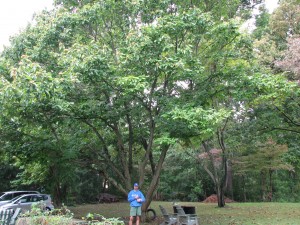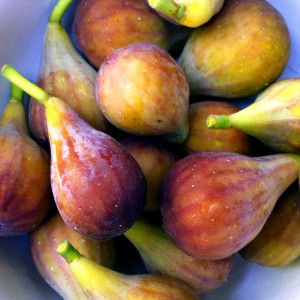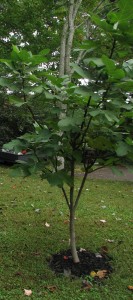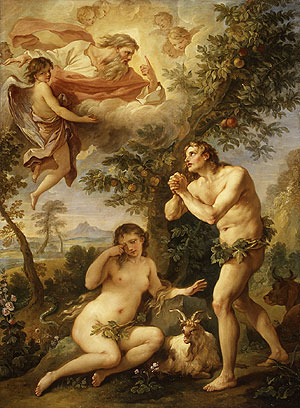Our fig tree has a bumper crop in store for us this year. The first fruits of the harvest are in and they are very tasty. It’s time to buy some prosciutto and blue cheese, make more jam, etc. While I look forward to that, here is the post from last year (7/23/2012) about my fig tree and the parable whose story it closely resembles.
Remember the parable of the barren fig tree? Honestly, I’ve lived it. Metaphorically, to be sure. But that is the subject of innumerable future blog posts. In this particular instance though, I mean literally too. And it was almost exactly like the parable that St. Luke recounts for us in his gospel.
Need a refresher? I’ll supply the pictures and a little back story, and St. Luke will hit the high points. Interestingly, this particular parable is found only in the Good Doctor’s gospel, in chapter 13, verses 6-9. In the Douay-Rheims translation, it goes like this.
A certain man had a fig tree planted in his vineyard, and he came seeking fruit on it, and found none.
And he said to the dresser of the vineyard: Behold, for these three years I come seeking fruit on this fig tree, and I find none.
Cut it done therefore: why cumbereth it the ground?
But he answering, said to him: Lord, let it alone this year also, until I dig about it, and dung it.
And if happily it bear fruit: but if not, then after that thou shalt cut it down.
What a great word, cumbereth, eh? And now for the rest of the story.
It was the summer of 2006 and the big renovation project of replacing the HVAC (Heating, Ventilation, Air Conditioning) System in the house we had bought (after my retirement from the Marines a year earlier) was complete. The clutter from the yard was gone and my green thumb started showing itself. Our new (older) home had great big trees in the yard. Large red buds and dogwoods (large as these trees go) were in the front yard, and immense maples, hickories, oaks, and even an elm tree were out back.
 But it didn’t have a fig tree, and I wanted one badly. In truth, I needed one. After all, didn’t the prophet Micah note that, to ensure happiness, every man needs at least one?
But it didn’t have a fig tree, and I wanted one badly. In truth, I needed one. After all, didn’t the prophet Micah note that, to ensure happiness, every man needs at least one?
“And every man shall sit under his vine, and under his fig tree, and there shall be none to make them afraid: for the mouth of the Lord of hosts hath spoken.”
Our home in Southern California had a Mission Fig tree, see? An immense one, with a trunk so large that I could barely get my arms around it. Naturally we put a swing on it for the kids. It was an old, happy, and productive fig tree. It put out loads of fruit at least once, and sometimes twice, a year. Every once in a while, it would go dormant for a year, say due to drought conditions, but usually, like clockwork, in June a bountiful harvest ensued.
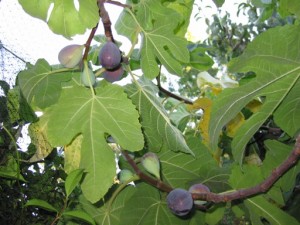
I used to love sitting under it, as it was so peaceful to do so. In fact, back when I was Sir Topham Hat of a fleet of trucks, once a year, when budget drafting time came around, I would leave the office to my able dispatchers, and with my laptop and cell phone in tow, I would move my office to the table underneath my fig tree. Profit & Loss centers gain more inspired budgets when they are drafted underneath a fig tree, believe you me. Business ideas thrive under a fig.
Theological speculation side note time. I’ve come to learn that some folks opine that the Tree of the Knowledge of Good and Evil was a fig tree. The theory is that once Adam and Eve ate of the fig, they gathered leaves from it in order to hide their nakedness. The Genesis account names the first garments as being made of fig leaves and so the rest is history. Whole treatises built around identifying the Tree of the Knowledge of Good and Evil with the fig tree have been written. And even sermons have been given going so far as to say,
The fig tree represents a system that produced everything that God hated. Its fruit was to be cursed.
Paging the Westboro Baptist Church? Haters gonna hate, I reckon. Maybe God Hates Figs? Not likely. Everything God created is good, which as any Catholic theological scholar can tell you means, you know, EVERYTHING.
Want to know my theory? Adam and Eve used fig leaves because, unlike the Tree of the Knowledge of Good and Evil, of which there was only one, and they didn’t need GPS to remember where it was located, fig trees were numerous. Not to mention they probably ran away from the TOTKOGE (best acronym ever!) like two scared foxes being chased by hounds and riders. In contrast, they had been eating the fruits of, and enjoying the shade of, fig trees for an untold number of years. Besides, everyone who heard this story, and who knows about fig leaves, would shudder in horror at the prospect of wearing anything remotely as itchy as a fig leaf. Adam and Eve got props for being hardcore penitents, no doubt. But don’t listen to me. What do I know?
Idea! What do Jewish scripture scholars think? When asked the question on whether the fig tree was the tree that got us all into trouble, you know, as the TOTKOGE, Rabbi Naftali Silberberg of Chabad.org has this to say.
The Talmud cites three opinions:
Rabbi Meir says that the Tree of Knowledge was a grapevine—”for nothing causes more heartbreak than wine….”
Rut-ro Raggy! Don’t tell Daphne, Velma, and Fred! If it’s grapes, see, we’ll all be dished! Think of the horrible allusions to the wickedness of wine that would be forthcoming. And Christ’s first miracle would fall under the microscope. Again! What’s behind door #2?
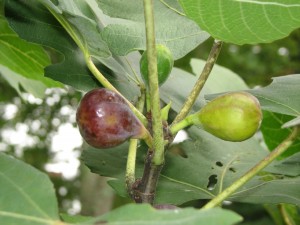
Rabbi Nehemiah maintains that it was a fig tree. The Torah tells us that after the sin, Adam and Eve “knew that they were naked, and they sewed fig leaves and made themselves girdles.” Rabbi Nehemiah maintains that “that which caused their downfall, was then used to rectify them.”
Sounds plausible, but I still don’t know. What’s behind door #3? And why are you grinning, Rabbi?
Rabbi Judah says it was actually wheat stalks! He bases his contention on the fact that “a child knows not how to call out to his father and mother until he has tasted grain.” As such, the Tree of Knowledge was actually grain.
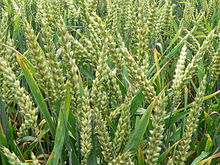
For real? *Psst, does that one have you scratching your head yet dear reader?* Care to elaborate, Rabbi?
The Ben Ish Chai, in his commentary on Genesis, suggests that it was a unique fruit that contained the taste of all these three products—grapes, figs and wheat. He also explains the kabbalistic significance of the fruit integrating these three tastes.

I bet we can make beer out of that! We could call it Dr. Pangloss’s, Kabbalistic, Best of All Possible Worlds, Original Sin Ale. Think of the possibilites! That would sell like hotcakes for the name alone. Oops,there I go thinking about beer again (St. Bridgid of Ireland, pray for me). But back to the problem with fig trees, Rabbi, are there any other sources we could check?
The Midrash quotes another opinion, that the fruit of the Tree of Knowledge was an etrog (citron).
Now you’re talking. Nobody eats citron, and they’re kind of poisonous, though in a good way. Any other possibilities?
Another opinion cited in the Midrash is that “G‑d (read YHWH) did not disclose the identity of the tree’s species, and He never will.” This in order to protect the honor of a species that would otherwise be tarnished—through no fault of its own.
So out of the five reasoned, and scripturally (the Midrash counts!) backed up arguments set forth, one is for the fig tree being the TOTKOGE, with four arguments “against.” 20% out of 100%. This sounds like one of those imponderables like how many angels can fit on the head of a pin. My money is on door #5, though #4 is a solid runner up. Meanwhile, let’s get back to my own fig tree story, shall we?
Recall I said it was like the parable of Jesus’s set forth at the beginning of this post. All I knew was I was homesick for my fig tree. Oh, the jam that we used to make! My aunt living in South Carolina had fig trees too, though they were a different variety, and more like big bushes. Her fig jam was to die for, and when she learned of our tree in California, she gave us her recipe. If you like peanut butter and jelly, try peanut butter and fig jam sandwiches. You may never go back.
So after the dust settled in Tennessee, I ordered a fig tree. I could not find them in the garden shops around my town, so ours arrived from Virginia. It was a little stick with a tiny root ball. I grabbed the shovel and headed for the only sunny spot in the back yard, and dug a big hole. Big holes are important when planting tiny trees, see. And it grew well. I watered it, fertilized it, and when Fall came, it went to sleep, and when Spring came, it awoke. Like Shel Silverstein’s “The Giving Tree,” it grew, and grew.
There was no fruit that first year, but I figured that would be the case. I knew that the variety I had chosen (Celeste) was good for our climate zone, and that time is what it needed. Time, and care. An older, and wiser, neighbor of ours had fig trees as well, and he told me that the first couple of years, he had wrapped the trees to protect them from the winters’ wrath.
Winters in East Tennessee are usually moderate, and I wouldn’t have to bury the tree to protect it (as they do in other areas), but when it was young, I had to baby it, and I did. I wrapped its limbs with tree wrap, and put a chicken wire fence around it, filling it with leaves from the other trees as they fell. Limbs wrapped, and trunk, and root ball, under a blanket of leaves, it went to sleep for the winter, warm and cozy.
In the second fall of its life, I trimmed away all its smaller branch trunks , for I wanted a tree with a single trunk, not a huge bush. But the most important thing was, I wanted fruit, and I would have to be patient for it. I again wrapped, and blanketed the little tree. In the Spring, it awoke again, healthy buds forming all over the trunks and the tips of the branches, which I had slathered with Vaseline and protected with plastic Dixie cups. They were green and shooting out new leaves. Maybe this would be the year of fruit!
And then disaster struck.
It was the Spring of 2008. After a warm March, I had unwrapped the tree, and removed the Dixie cups, but I left the blanket of leaves on for some reason, most likely laziness. All was well, until the second week of April, when a killing frost came to call. It was sudden, and the temperature plummeted, and the high on consecutive days moved the mercury no higher than the number 19, and the lows were close to zero. The baby tree might have survived one day at those temperatures, but not two, nor the cold week as temperatures struggled back to normal.
And the tree died, or so I thought. I removed the blanket I had lovingly made, and that was that.
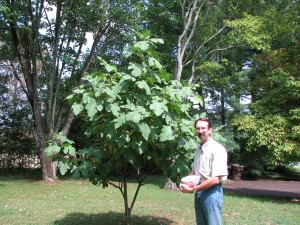
But as warmth returned, and Spring moved on into the third summer, the little tree grew again. First one, then two, then three new trunks shot out of the ground, reaching for the sun, the giver of life. I think, in all, seven or eight new trunks pushed out of the ground, much like how a Crepe Myrtle grows with multiple trunks in the South. And I let them all grow, before I cut them all off again. You know, all except the new main trunk.
I was a Catholic by this time, and I must have reread the parable recounted in Luke’s gospel as I studied my faith anew. I wondered, is this some kind of sign? Here I was after three summers in the life of my little tree, with absolutely nothing to show for it. So I figured I’d just do what the dresser of the vineyard recommended. To wit,
Lord, let it alone this year also, until I dig about it, and dung it.
And dig it and dung it, I did. And wouldn’t you know it, in the fourth summer of it’s life, it bore fruit. Not enough fruit to make jam yet, but enough to count it a victory. This wonderful fact also served as reminder to me that the parables of Jesus were grounded in the real, in what the hearers of them knew and understood. Sure, there would be “bad figs” as well as “good” figs, just like anything else. People understood that then, as they do now. And just like everything else, Christ makes all things new, including fig trees, which he created as good in the first place.
The next year, in the Summer of 2010 (see photo above), enough figs came in so that jam was made. Winnie the Pooh wasn’t any happier than me. Just ask my wife. And what you see below is the happiest sight of the year so far, from my backyard at least. Even happier than an ice cold beer. I present the first fruits of 2012! Oh, there will be more jam, and there will be prosciutto wrapped figs and blue cheese, and other delights as well.
How about another scripture quote? You know, in case real theologians come gunning for me. I’m going to use the Amos Alibi™,
And Amos answered and said to Amasias: “I am not a prophet, nor am I the son of a prophet: but I am a herdsman plucking wild figs.”
You tell ’em Amos. we’re birds of a feather, though in my case, I pluck patiently cultivated ones, 42 days earlier than last year.
I’ll have to trade mark that Dr. Pangloss’s, Kabbalistic, Best of All Possible Worlds, Original Sin Ale™, though, don’t you think? In the meantime, I’m looking forward to making more of this!
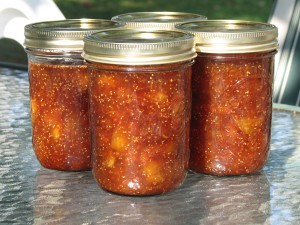
Now, have I ever told you the story about my Chestnut tree? Hey…where’re you goin’?
